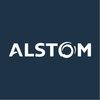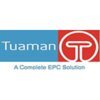Filter interviews by
Indwell Safety Officer Interview Questions and Answers
Indwell Safety Officer Interview Experiences
1 interview found
Interview Questionnaire
8 Questions
- Q1. Safety precautions at work at hight at 110 fit ?
- Ans.
Safety precautions at work at height of 110 feet
Ensure proper fall protection equipment is worn at all times
Conduct regular safety inspections of equipment and work area
Train employees on proper safety procedures and emergency response
Implement a buddy system for workers at height
Ensure proper lighting and visibility in work area
Establish an emergency response plan in case of accidents or injuries
- Q2. Work at hight?
- Q3. Welding precaution?
- Ans.
Welding precautions ensure safety by minimizing risks of fire, injury, and exposure to harmful substances during welding operations.
Use appropriate personal protective equipment (PPE) such as helmets, gloves, and flame-resistant clothing.
Ensure proper ventilation to avoid inhalation of harmful fumes; use fume extraction systems if necessary.
Keep flammable materials away from the welding area; use fire-retardant barrier...
- Q4. Cutting,Grinding , precaution
- Q5. Lifting material and loading/ unloading precaution?
- Ans.
Precautions must be taken while lifting and loading/unloading materials to prevent injuries.
Ensure that the weight of the material is within the safe lifting limit.
Use proper lifting techniques such as bending at the knees and keeping the back straight.
Wear appropriate personal protective equipment such as gloves and safety shoes.
Use mechanical aids such as forklifts or cranes if necessary.
Ensure that the loading/unloa...
- Q6. Have u knowledge about 5×800 power plant?
- Ans.
Yes, 5x800 power plant refers to a power plant with five units, each with a capacity of 800 megawatts.
5x800 power plant has a total capacity of 4000 megawatts.
It is a type of thermal power plant that uses coal as fuel.
It requires a large amount of water for cooling purposes.
The power plant may have multiple safety systems in place, such as fire suppression systems and emergency shutdown procedures.
Maintenance and inspe...
- Q7. Have u given ever toolbox talk?
- Q8. What is confined space?
- Ans.
Confined space refers to an area that is enclosed and has limited access or egress.
Examples include tanks, vessels, silos, sewers, and tunnels.
Confined spaces may pose a risk of asphyxiation, entrapment, or exposure to hazardous substances.
Proper training, equipment, and procedures are necessary for safe entry and work in confined spaces.
Top trending discussions






Interview questions from similar companies

Safety Officer Interview Questions & Answers
Shapoorji Pallonji Groupposted on 2 Nov 2021
I applied via Referral and was interviewed before Nov 2020. There was 1 interview round.
Interview Questionnaire
3 Questions
- Q1. About my Self
- Q2. Height work safety & Control measures
- Q3. Engineering control, legal control , administrative control, ppe
Interview Preparation Tips

Safety Officer Interview Questions & Answers
Shapoorji Pallonji Groupposted on 2 Nov 2021
I applied via Referral and was interviewed before Nov 2020. There was 1 interview round.
Interview Questionnaire
2 Questions
- Q1. Height work safety &Control measures
- Q2. Administrative control, Engineering control, legal control
Interview Preparation Tips

Safety Officer Interview Questions & Answers
Megha Engineering & Infrastructuresposted on 19 Jun 2021
I applied via Walk-in and was interviewed in Dec 2020. There was 1 interview round.
Interview Questionnaire
1 Question
- Q1. 1 Tell me about your self 2 Project work 3 some basic topics related to safety 4 C.V. basic topics
Interview Preparation Tips

Safety Officer Interview Questions & Answers
Shapoorji Pallonji Groupposted on 27 Jun 2025
I appeared for an interview in May 2025, where I was asked the following questions.
- Q1. What is Scaffolding
- Ans.
Scaffolding is a temporary structure used to support workers and materials during construction or maintenance activities.
Provides a safe working platform at various heights.
Commonly made from metal or wood, depending on the project.
Used in construction, painting, and maintenance tasks.
Example: Scaffolding is essential for high-rise building construction.
Must comply with safety regulations to prevent accidents.
- Q2. What is working at heights
- Ans.
Working at heights involves tasks performed above ground level, requiring safety measures to prevent falls and injuries.
Definition: Any work conducted at a height of 2 meters or more.
Examples: Construction work on scaffolding, maintenance on rooftops.
Safety Equipment: Use of harnesses, guardrails, and safety nets.
Training: Workers must be trained in fall protection and emergency procedures.
Regulations: Compliance with ...
- Q3. How can we effectively save our team?
- Ans.
Effective team safety involves proactive measures, training, and a culture of communication and accountability.
Conduct regular safety training sessions to ensure all team members are aware of protocols.
Implement a reporting system for near misses and hazards, encouraging open communication.
Use personal protective equipment (PPE) consistently; for example, ensure all workers wear helmets on construction sites.
Perform re...
- Q4. Everyone understands the team’s goals. Roles and responsibilities are clearly defined. Priorities are not constantly shifting without context.
- Q5. Safety Harnees inspection
Interview Preparation Tips

Safety Officer Interview Questions & Answers
Shapoorji Pallonji Groupposted on 14 Jun 2025
I appeared for an interview before Jun 2024, where I was asked the following questions.
- Q1. What knowledge required to become a Safety Officer?
- Ans.
A Safety Officer must possess knowledge in regulations, risk assessment, and emergency response to ensure workplace safety.
Understanding of OSHA regulations and compliance requirements.
Knowledge of hazard identification and risk assessment techniques.
Familiarity with safety training programs and employee education.
Ability to conduct safety audits and inspections.
Experience with emergency response planning and drills.
- Q2. How can you effectively manage and treat your workforce?
- Ans.
Effective workforce management involves proactive safety measures, communication, and continuous training to ensure a safe work environment.
Conduct regular safety training sessions to keep employees informed about safety protocols and emergency procedures.
Implement a reporting system for near misses and hazards, encouraging employees to voice concerns without fear of reprisal.
Perform regular safety audits and inspectio...
- Q3. What is control measure.
- Ans.
Control measures are strategies implemented to minimize risks and ensure safety in various environments.
Control measures can be administrative, engineering, or personal protective equipment (PPE).
Example: Installing guardrails on scaffolding to prevent falls.
Example: Conducting regular safety training sessions for employees.
Example: Using PPE like helmets and gloves to protect workers from hazards.
Interview Preparation Tips

Safety Officer Interview Questions & Answers
Shapoorji Pallonji Groupposted on 19 Oct 2023

(1 Question)
- Q1. Salary, location jonlb
(1 Question)
- Q1. Work permit, checklist, hira , JSA

Safety Officer Interview Questions & Answers
Shapoorji Pallonji Groupposted on 27 Mar 2025
- Q1. What is the difference between ELCB and RCCB ?
- Ans.
ELCB detects earth faults, while RCCB protects against earth leakage currents, enhancing electrical safety.
ELCB (Earth Leakage Circuit Breaker) detects earth faults and disconnects the circuit.
RCCB (Residual Current Circuit Breaker) monitors the balance of current between live and neutral wires.
ELCB is mainly used in older installations; RCCB is more common in modern electrical systems.
Example: ELCB trips when it sense...
- Q2. What is Safety definition?
- Ans.
Safety is the condition of being protected from harm, danger, or injury in various environments.
Safety involves risk management to prevent accidents and injuries.
Examples include using personal protective equipment (PPE) in construction.
Safety protocols are essential in workplaces to ensure employee well-being.
Regular safety training helps in maintaining awareness and preparedness.

Safety Officer Interview Questions & Answers
Megha Engineering & Infrastructuresposted on 25 Jun 2024
(2 Questions)
- Q1. What is HIRA and how to prepare it
- Ans.
HIRA stands for Hazard Identification and Risk Assessment. It is a systematic process to identify potential hazards and assess the associated risks.
Identify all potential hazards in the workplace or task
Assess the likelihood and severity of each hazard
Determine the level of risk for each hazard
Implement control measures to mitigate or eliminate the risks
Regularly review and update the HIRA as needed
- Q2. What is JSA and its purposes
- Ans.
JSA stands for Job Safety Analysis. It is a process used to identify and control hazards in the workplace.
JSA involves breaking down a job into its individual tasks and identifying potential hazards associated with each task.
The purpose of JSA is to prevent accidents and injuries by proactively addressing safety risks.
JSA helps in developing safe work procedures and training employees on how to perform tasks safely.
Exa...
HIRA , JSA, MSDS , PTW
Interview Preparation Tips

Safety Officer Interview Questions & Answers
Megha Engineering & Infrastructuresposted on 3 Apr 2025
I appeared for an interview in Oct 2024, where I was asked the following questions.
- Q1. Safety requirements rule
- Q2. Equipment training use
- Ans.
Effective equipment training ensures safety and proficiency in using tools and machinery in the workplace.
Conduct regular training sessions to familiarize employees with equipment.
Use hands-on demonstrations to enhance understanding, e.g., showing proper lifting techniques for heavy machinery.
Implement a buddy system where experienced workers mentor new employees on equipment use.
Provide clear manuals and safety guidel...
- Q3. Safety precautions
- Q4. Safety work and treaning
Indwell Interview FAQs
Tell us how to improve this page.
Indwell Interviews By Designations
- Indwell Project Manager Interview Questions
- Indwell Store Manager Interview Questions
- Indwell Senior Electrical Engineer Interview Questions
- Indwell Resident Engineer Interview Questions
- Indwell Safety Officer Interview Questions
- Indwell Assistant Resident Engineer Interview Questions
- Indwell Safety Supervisor Interview Questions
- Indwell Welding Piping Inspector Interview Questions
- Show more
Interview Questions for Popular Designations
Safety Officer Interview Questions from Similar Companies
Indwell Safety Officer Reviews and Ratings
based on 11 reviews
Rating in categories
|
Safety Officer
31
salaries
| ₹2 L/yr - ₹4.8 L/yr |
|
Mechanical Engineer
19
salaries
| ₹1.8 L/yr - ₹5.2 L/yr |
|
Engineer
13
salaries
| ₹1.8 L/yr - ₹4 L/yr |
|
Safety Supervisor
9
salaries
| ₹2 L/yr - ₹3.5 L/yr |
|
Senior Engineer
8
salaries
| ₹3.5 L/yr - ₹5.8 L/yr |

Megha Engineering & Infrastructures

Shapoorji Pallonji Group

Alstom Transportation

Tata Technologies
- Home >
- Interviews >
- Indwell Interview Questions

















